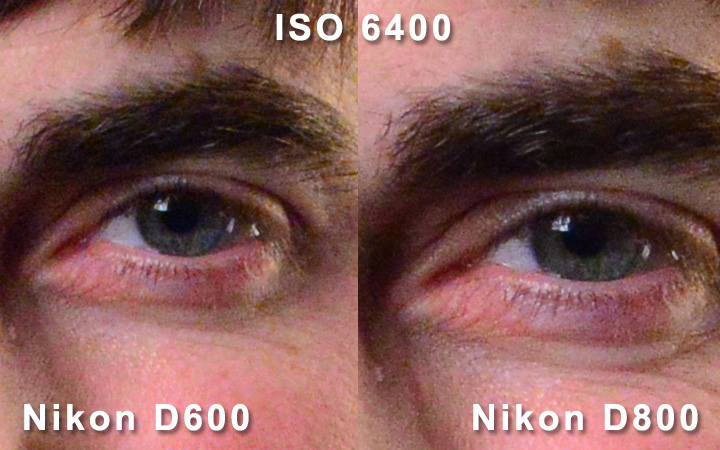I was planing on eventually buying a D600 but when I saw yesterday that they were "in stock" and ready to ship from Amazon, I bought one. I'm a Prime member so I get free 2 day shipping but for just $3.99 more they gave me over-night shipping. Patrick was over at my place packing for a wedding this weekend when the camera came in and we decided to quickly compare the cameras ISO performance to the D800.

Let me first start off by saying that the D600 is significantly bigger than the D7000 (in a good way). It fits in my hand much better, but I am still looking forward to putting a battery grip on it. We put a Nikon 70-200mm 2.8 on a tripod and focused the camera in live view at F2.8. We then stopped the camera down to F5 and shot 4 shots with each camera from ISO 3200 up to "hi 2.0" which is ISO 25,600. In our test both cameras performed almost identically, producing fantastic looking shots at ISO 12,800. Once we went up to "hi 2" the noise became pretty severe but in many cases (especially black and white images) these files are still totally usable.
Full Res Nikon D600 Images:
Full Res Nikon D800 Images:
My biggest beef with the D600 so far is that you cannot change the Fstop while in live view. I shoot a bunch of video and that is going to be a big pain. The button layout and the rotating nob up top is also really cumbersome but I've learned to live with that since I've shot with D7000s for so long. I was hoping that the D600 would perform better at high ISOs since it has less megapixels but that doesn't seem to be the case. What do you guys think about this cameras performance? Is it worth saving $900 and buying a D600 or should you pay a little more and get the D800?






After reading Ken Rockwell's D600 review, Im convinced too that this is just marketing stuff, D4 D800 and D600 have the same innards but just packed differently and with an adapted firmware for a certain target market. And makes sense seeing the performance in dxomarks.com they are so close, that's suspicious. And if Canon did it with the 1Dx and the 1Dc (swapping just firmware to have a whole new cam) pretty sure Nikon did it too...
This is easy understood with an example, lets say you and an given area of 4 square inches. Lets call this area A1. Lets say that each square inch is a pixel.
This area was build by a= 2 inches (vertical) and b= 2 inch
If you want to double the area, you will have to multiply A1 times 2= A1x2= 4 square inches x 2= 8 square inches
Ok, if you double a, or b, same result, you have double the area, but more resolutions means more pixels in the SAME area. And the shape of that area is constant. Now lets call the initial A1 area, the standard area to report the so call resolution of the camera (p.e. 4megapixels, 8 MP, 16 MP.... You name it) remember they use the same base of area to report the number of pixels.
Now, if you want to put the double of pixels in the same area, and in order to maintain the same ratio, a=b, you will have to put 4 times the pixels, if you don't do that you will have and area with double of pixels and 2 empty spots.
Conclusion: More pixel located in the same are will means more resolution.
Double the amount of pixels in the same area is not possible because a square configuration must be kept.
4 times the amount of initial pixels will kept the square area intact.
Your math is correct, your conclusions are not.
apologies if this has been pointed out but the 6400 iso comparison pic is a bit misleading. The d600 is further away/or zoomed further out.Causing 2 problems.
1. Theoretically according to iverse square law, if the camera is further away, the intensity of light from the surface hitting the sensor will be smaller.
2. The image on the left appears darker than that on the left due to inclusion of darker areas around the outside of the frame (cropped out in right image) Try manually cropping the image on the left with your fingers to match the framing of the picture on the right, and the begin to look far more matched.
Have fun with the camera, hope it serves you well!